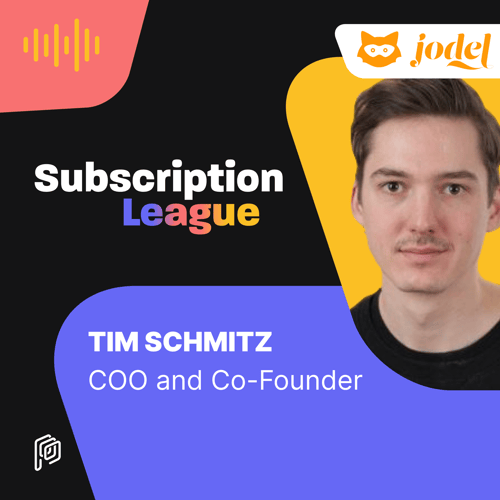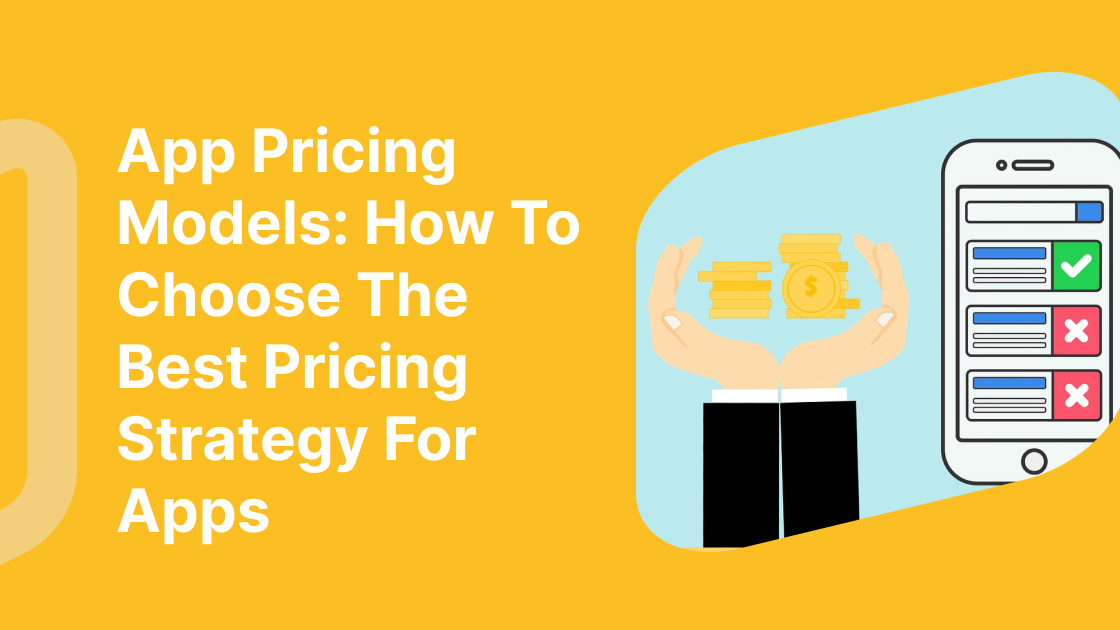An app pricing model is how you monetize active users. There are many ways to go about it and many factors to consider to achieve your business goals. It needs to be affordable for users, built on a sustainable financial model, take competitor pricing into account, and provide a higher perceived value than its cost.
We’re going to share some of the most common pricing strategies with you to help you decide what’s right for your mobile app. To begin with, it’s worth looking at the four most popular app pricing models.
Free app pricing model
Free apps is a great way to maximize the number of downloads you get without putting up any barriers or paywalls that may deter new users. Examples of free apps include:
-
Social media apps like Facebook and TikTok
-
E-commerce platforms like Amazon
-
Messenger apps like WhatsApp or Slack
-
Video editors like CapCut
There are a number of ways to approach monetization if you decide on a free app pricing strategy, it depends on your business model. Social media sites like Facebook typically generate revenue by selling advertising space. Facebook made $115 billion dollars in advertising revenue in 2021 - that’s roughly 10% of global ad revenue. So that’s one way of doing it, though you’ll need a massive user base to make this financially viable.
For shopping or e-commerce platforms like Amazon, their apps are a means to an end. Users buy products from the site, and Amazon charges a referral fee for each item sold. The fee can range between 8% and 15%. But Amazon is a marketplace, which is different from a brand like Nike or Domino’s. For these brands, their app is simply an extension of the service they provide, another way to engage with customers. They may include exclusive offers and discounts inside the app to keep active users engaged and build up loyalty.
There are also lots of free gaming apps you can download on the App Store or Google Play Store such as Angry Birds Journey or Apex Legends. These games rely on in-app advertising and In-App Purchases to generate revenue. With in-app advertising it’s important to avoid disrupting the user experience (UX) too much, but it’s safe to say this monetization model isn’t going anywhere: in-app advertising spend reached a whopping $201 billion in 2021!
Freemium app pricing strategy
This is the most dominant app pricing model used by app developers today. You can read more about this model here. Freemium apps work by offering a pricing tiers: a free version of the app with basic features, alongside a premium version of the app with more advanced features that users have to pay for. Subscription apps typically use this pricing strategy to generate more subscribers and increase their in-app revenue. Examples range across all industries from e-commerce, Software-as-a-Service (SaaS), Edtech, media and entertainment, fitness and dating, and include:
-
Mailchimp
-
Dropbox
-
Masterclass
-
Busuu
-
Bumble
-
Hinge
-
Fitbit
-
Strava
What are the benefits of this model? It allows app developers to scale its user base with its free features and the monthly subscription fee (once users convert) provides a sustainable source of revenue. That means less headaches for your finance department.
Here are some great examples of subscription apps that are winning the conversion game using the freemium pricing model. Or for anyone looking to transition their monetization strategy from in-app advertising to freemium, you can listen to our podcast with the COO and co-founder of Jodel on how they went from selling ads to in-app subscription revenue.

Paid app pricing model
Paid app can be a risky strategy for a lesser-known brand or app as it can put off potential customers, especially when users can access free versions of most apps in the marketplace using the freemium model. This app pricing model works better for established brands such as Netflix, Apple TV, or Minecraft - which happens to be the most downloaded paid app in the US from the Apple App Store and Google Play Store and costs $6.99.
These apps win because of their content and brand reputation. Take Netflix, well-known for high-quality original shows like Stranger Things, Narcos, The Crown, and more recently shows like Squid Games and The Witcher. It’s not only the vast amount of movies and shows on Netflix available at users fingertips, but the fact Netflix keeps investing in producing brand new content and shows like these to keep users excited and coming back for more.
Paymium app pricing strategy
Paymium is an emerging app pricing model that combines freemium and paid app pricing strategies. It’s essentially a paid app where active users have the option to buy additional features, content or services through in-app purchases. Popular examples of apps using this pricing model include:
Many paymium apps, including Bloons TD 6 and Monopoly, are listed as top sellers in the iTunes App Store and Google Play Store in several countries, which demonstrates one thing: this app pricing model works. The benefit for developers is the potentially higher revenue streams, as well as bringing down their initial download costs by using in-app purchases for ongoing monetization.
How to choose the right app pricing model
Now that we’ve looked at the most common app pricing models used by developers, it’s time to decide which strategy to pick. There’s clearly some serious revenue to be made in the app market, but how do you decide which pricing strategy is best for your app?
What are your competitors doing?
Doing thorough market research should be a given. Within that research, you should do a competitive pricing analysis to understand how your competitors’ pricing compares to the market as a whole.
One useful way of doing this is by creating a competitive matrix. If you’ve developed a game, then you can look at how similar types of games have priced themselves, while at the same time unpicking other strengths, weaknesses and opportunities to successfully differentiate your app.
Remember, you don’t need to stick to a pricing model. Once your app gains traction you may want to consider changing to a different product pricing strategy, such as freemium, paid or paymium. This is exactly what Tim Schmitz did when he shifted Jodel’s app pricing strategy from in-app advertising to in-app subscriptions.
Test!
Once you’ve done market and competitive analysis, you should have a good idea of where to price your app. But if every other app within your niche is free, that doesn’t mean yours should be free too.
It all comes down to your app’s value proposition. If the perceived value of your app is greater than your competitors - due to more features, better product positioning and messaging - then you may consider a different pricing strategy to capitalize on the opportunity. The only way to find out is to test a variety of pricing models and see how users respond. Whatever you decide, make sure that the price is reasonable and affordable by industry standards to maintain loyalty among customers.
Value should exceed price
Pricing is all about perception. People don’t mind spending thousands of dollars on iPhones and MacBooks because they are best-in-class. Similarly, when it comes to putting a price on an app, user expectations will increase.
Does it have an excellent user interface? Are there any lingering bugs? Is the in-app experience far better than any competitor?
Even if a user pays £1.99 for an app, they will expect that it is top quality and will want an excellent app experience. So if you do decide to stick a price on an app upfront, make sure the value and its functionality is higher than the price paid.
Lower prices erode value
The mobile app market is oversaturated with 3.6 million apps on Apple’s App Store alone. And with so many free apps out there, it can make difficult for developers who want to charge for downloads.
The problem with a race-to-the-bottom pricing strategy however is that it can erode the perceived value of your app. To avoid this, mobile app companies should survey customers and their potential market to understand what they would really be willing to pay for the app. We advise asking questions from Van Westendorp’s price sensitivity meter to find their acceptable pay range:
-
At what price would you consider the product to be so expensive that you would not consider buying it? (This tells you a price point that is too expensive for this customer.)
-
At what price would you consider the product to be priced so low that you would feel the quality couldn’t be very good? (This tells you a price point that is too cheap for this customer.)
-
At what price would you consider the product starting to get expensive, so that it is not out of the question, but you would have to give some thought to buying it? (This tells you a high end of the range of acceptable prices for this customer.)
-
At what price would you consider the product to be a bargain—a great buy for the money? (This gives you a low end of the range of acceptable prices for this customer.)
We released at YE 2022 a podcast episode with Jenny Pollock, Lead Subscription Monetization Manager at Together Labs. She explains how quantitative and qualitative user research can help better answer those questions and turn users into the valuable backbone of product and revenue optimization.
Subscription models are best for revenue growth
When it comes to choosing your app pricing strategy, we believe subscription plans have proven their worth. Subscriptions account for 82% of revenue generated on average by non-gaming apps, and it’s easy to see why.
For more insights on the subscription app pricing model, check out this podcast episode with MobileGroove founder Peggy Anne Salz where we discuss importance to repeatedly communicate the value to consumers.
Or you can subscribe to our podcast, the Subscription League, where Purchasely’s founders sit down every week with CEOs, app marketers and innovators to discuss the secrets to building a successful mobile app.
Ready to go one step further? Get a Purchasely demo and see how you can build and grow a successful In-App subscription strategy today.
.png)
.png)



